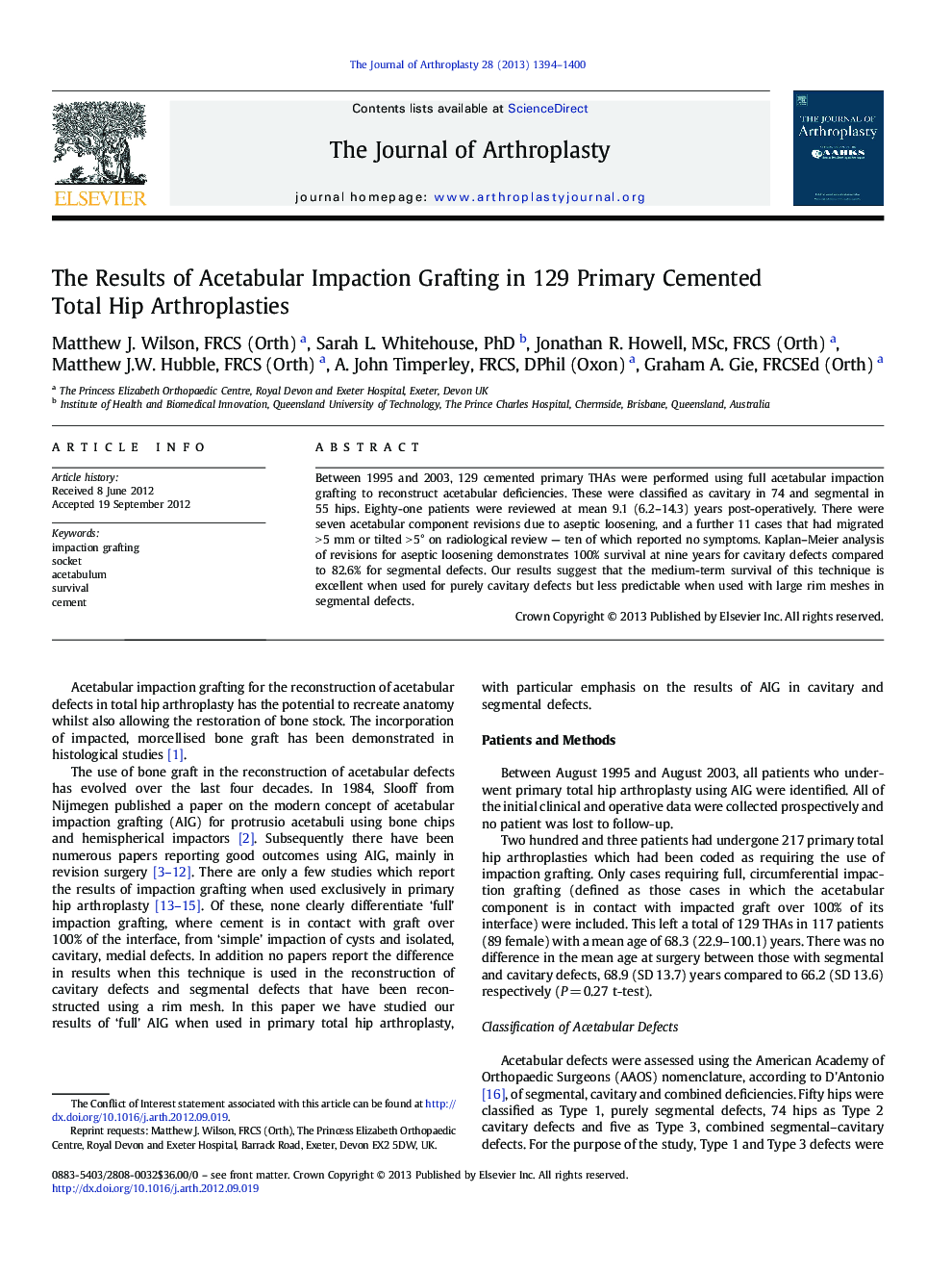| Article ID | Journal | Published Year | Pages | File Type |
|---|---|---|---|---|
| 4061093 | The Journal of Arthroplasty | 2013 | 7 Pages |
Abstract
Between 1995 and 2003, 129 cemented primary THAs were performed using full acetabular impaction grafting to reconstruct acetabular deficiencies. These were classified as cavitary in 74 and segmental in 55 hips. Eighty-one patients were reviewed at mean 9.1 (6.2-14.3) years post-operatively. There were seven acetabular component revisions due to aseptic loosening, and a further 11 cases that had migrated > 5 mm or tilted > 5° on radiological review - ten of which reported no symptoms. Kaplan-Meier analysis of revisions for aseptic loosening demonstrates 100% survival at nine years for cavitary defects compared to 82.6% for segmental defects. Our results suggest that the medium-term survival of this technique is excellent when used for purely cavitary defects but less predictable when used with large rim meshes in segmental defects.
Related Topics
Health Sciences
Medicine and Dentistry
Orthopedics, Sports Medicine and Rehabilitation
Authors
Matthew J. FRCS (Orth), Sarah L. PhD, Jonathan R. MSc, FRCS (Orth), Matthew J.W. FRCS (Orth), A. John FRCS, DPhil (Oxon), Graham A. FRCSEd (Orth),
